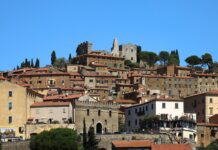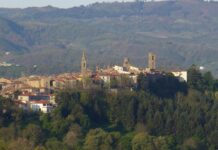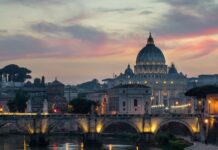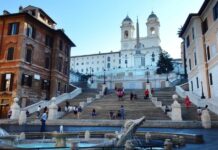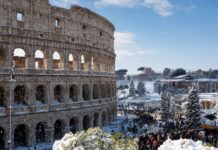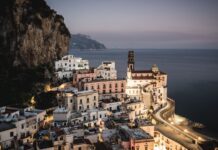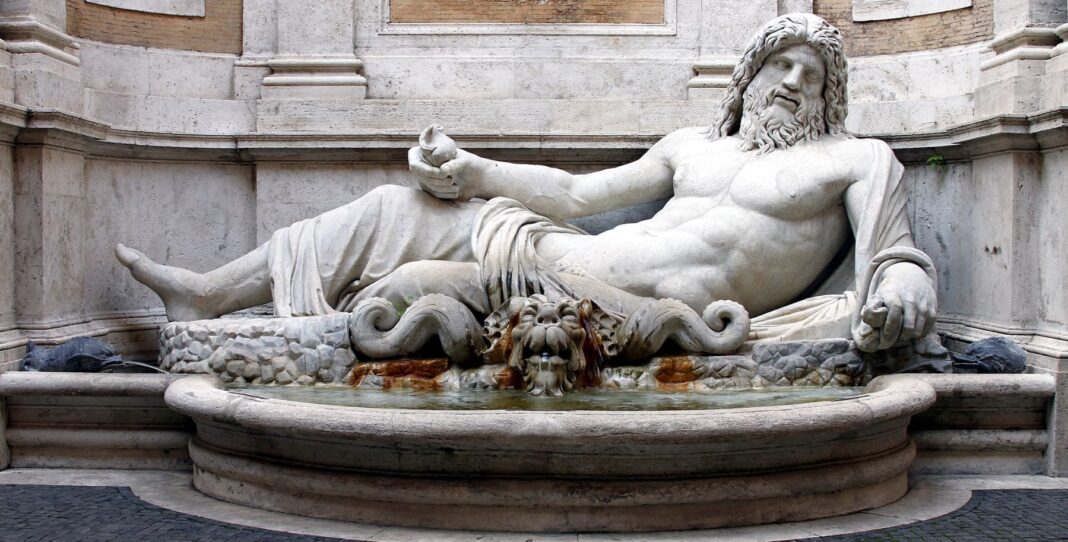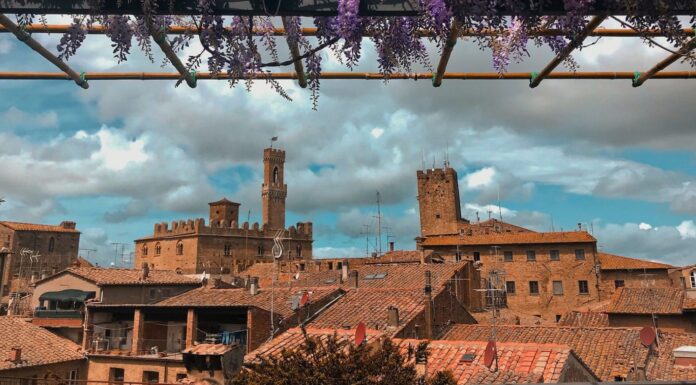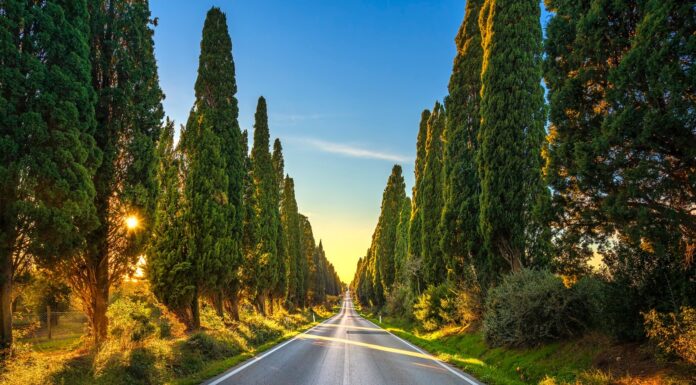The statues in Rome are some of the most iconic in the world, boasting top craftsmanship and a rich history. It’s impossible to discuss Roman culture without mentioning its enviable collection of historic statues. So, what are some of Rome’s most iconic statues?
Some of the most notable statues worth viewing while in Rome include David, Boxer at Rest, La Pietà, the Colossus of Constantine, Laocoon and His Sons, Moses, Apollo and Daphne, Augustus of Prima Porta, The Fountain of the Four Rivers, Capitoline Venus, and The Dying Gaul, among others. Rome is also home to talking statues like II Babuino, Marforio, II Facchino, Abate Luigi, and Pasquino.
In this article, we’ll take a closer look at the 23 most popular statues worth viewing when in Rome. Ready? Let’s get started.
Famous Statues in Rome
Below are some of the most famous Roman statues
1. David
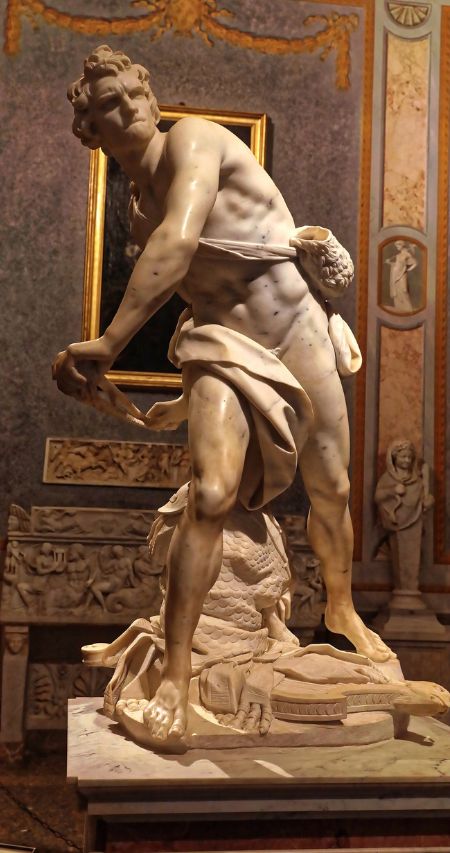
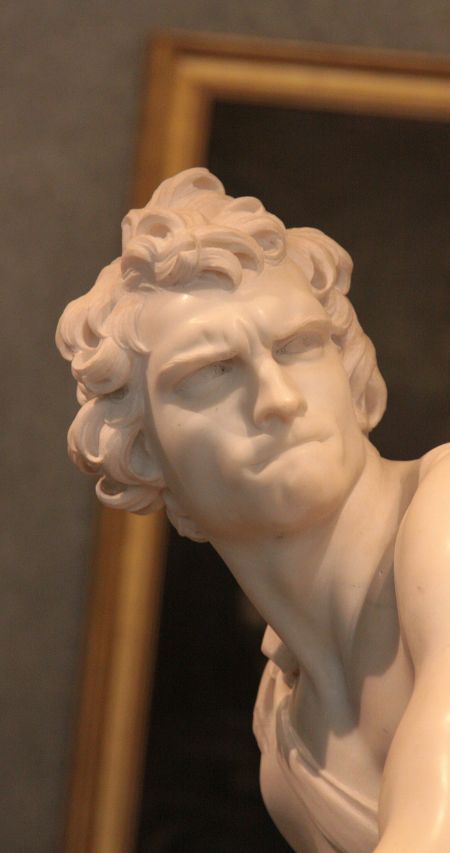
Artist: GianLorenzo Bernini
Year: 1623
Medium: Marble
Location: Galleria Borghese
Commissioned by Cardinal Scipione in 1623, David is one of Lorenzo Bernini’s most popular pieces. The life-sized marble sculpture depicts the biblical David, who is clothed in a flowing robe, unlike Michaleangelo’s nude David sculpture. Bernini’s David sculpture took 8 months to complete and currently resides in Galleria Borghese in Rome.
2. Boxer at Rest

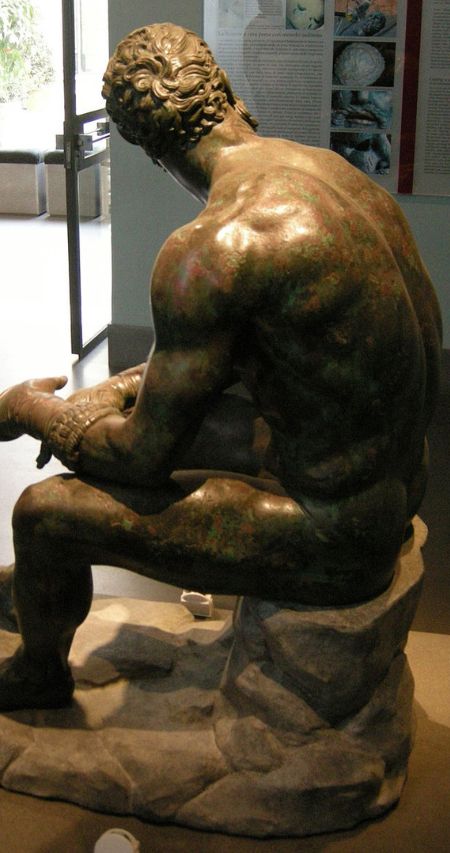
Artist: Unknown
Year: Between 330-50BC
Medium: Bronze
Location: Palazzo Massimo alle Terme
Also known as the Seated Boxer or Defeated Boxer, the Boxer at Rest is one of Italy’s most treasured statues due to its medium and age. It’s among the few sculptures to have survived the ancient age and depicts a muscular but bruised athlete sitting with his arms above his knees. The Seated Boxer was discovered in the 19th century and is highly regarded for its intricate artistic details.
Read more: Monuments in Rome – 22 Must-See Gems for History Buffs
3. La Pieta
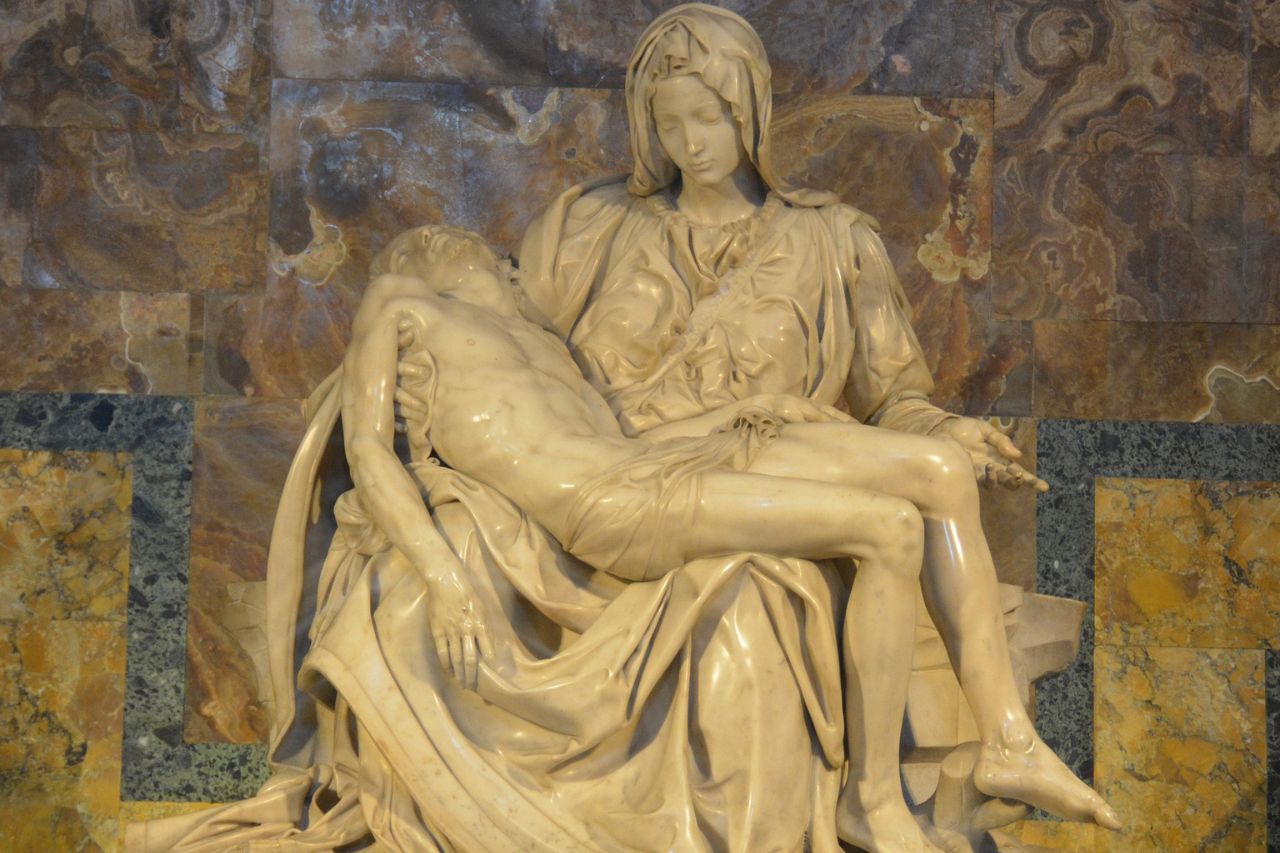
Artist: Michelangelo
Year: 1498-1499
Medium: Marble
Location: Saint Peter’s Basilica
La Pieta is popular for its sublime architecture that balances naturalism and classical beauty. It was commissioned to Michelangelo in the 15th century and depicts Mary holding Jesus on her lap after his crucifixion. The statue is housed in Saint Peter’s Basilica and bears Michelangelo’s signature, a feature that makes it one of the most famous statues in Rome.
Read more: Free Things to Do in Rome – 27 of the Best Free Activities
4. The Colossus of Constantine
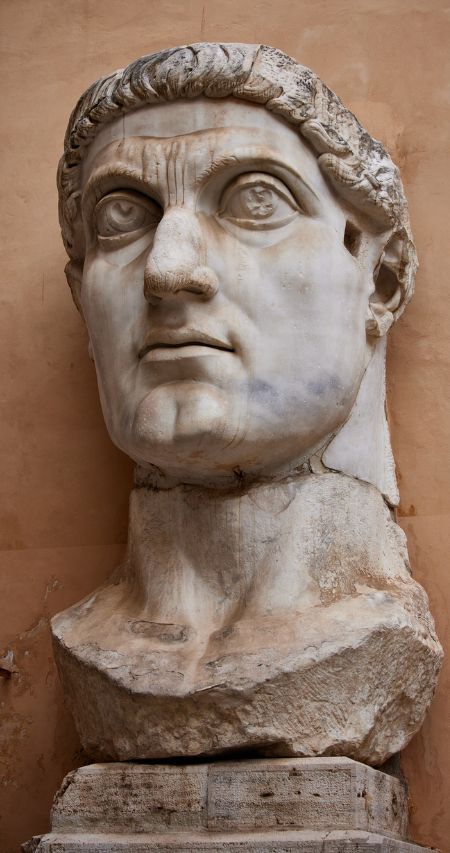
D. Benjamin Miller, CC0, via Wikimedia Commons
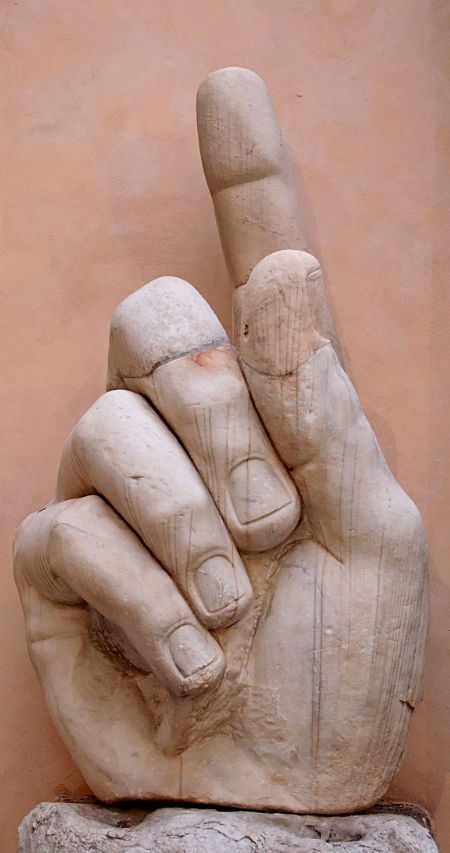
Capitoline Museums, Public domain, via Wikimedia Commons
Artist: Unknown
Year: 312-315 AD
Medium: White marble
Location: Palazzo dei Conservatori (Capitoline Museums)
The Colossus of Constantine was a depiction of Constantine the Great who ruled between 280-337. The fragments of the Colossus are housed in the Capitoline Museums, more specifically at the Palazzo dei Conservatori’s courtyard. Most of the statue’s fragments were discovered in 1486, with the left breast and right arm being discovered later on. The head and neck fragment is an incredible 2.5 meters tall, while the right-hand stands at 1.66 meters
5. Laocoon and His Sons
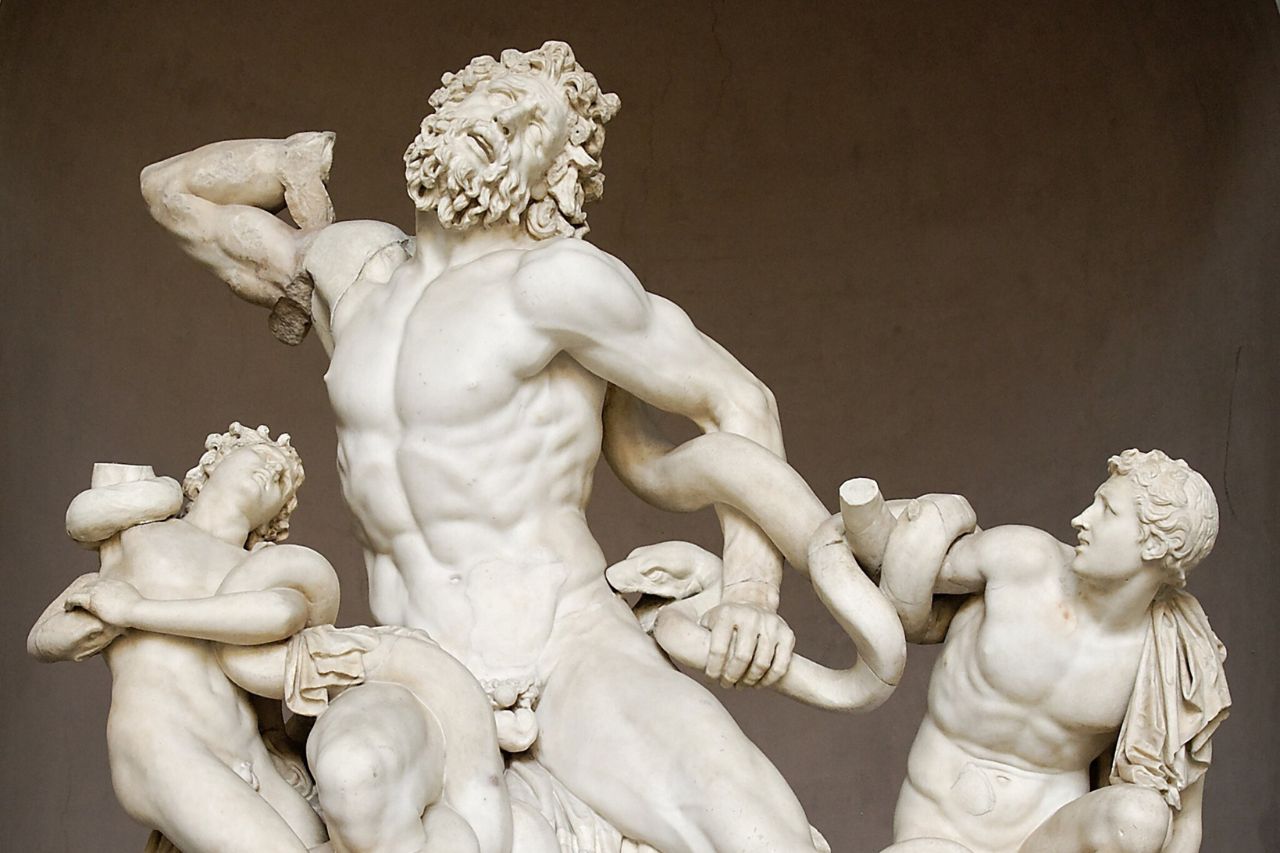
Artist: Unknown
Year: Between 323 BCE and 31 CE
Medium: Marble
Location: Vatican Museums
Widely viewed to be one of the finest antique sculptures discovered, Laocoon and His Sons stands out for its fine execution. The world-renowned sculpture was excavated in 1506, with Laocoon missing his right arm. It is housed in the Vatican’s Pio Clementino Museum and depicts two serpents attacking Locoon and his two sons.
6. Moses
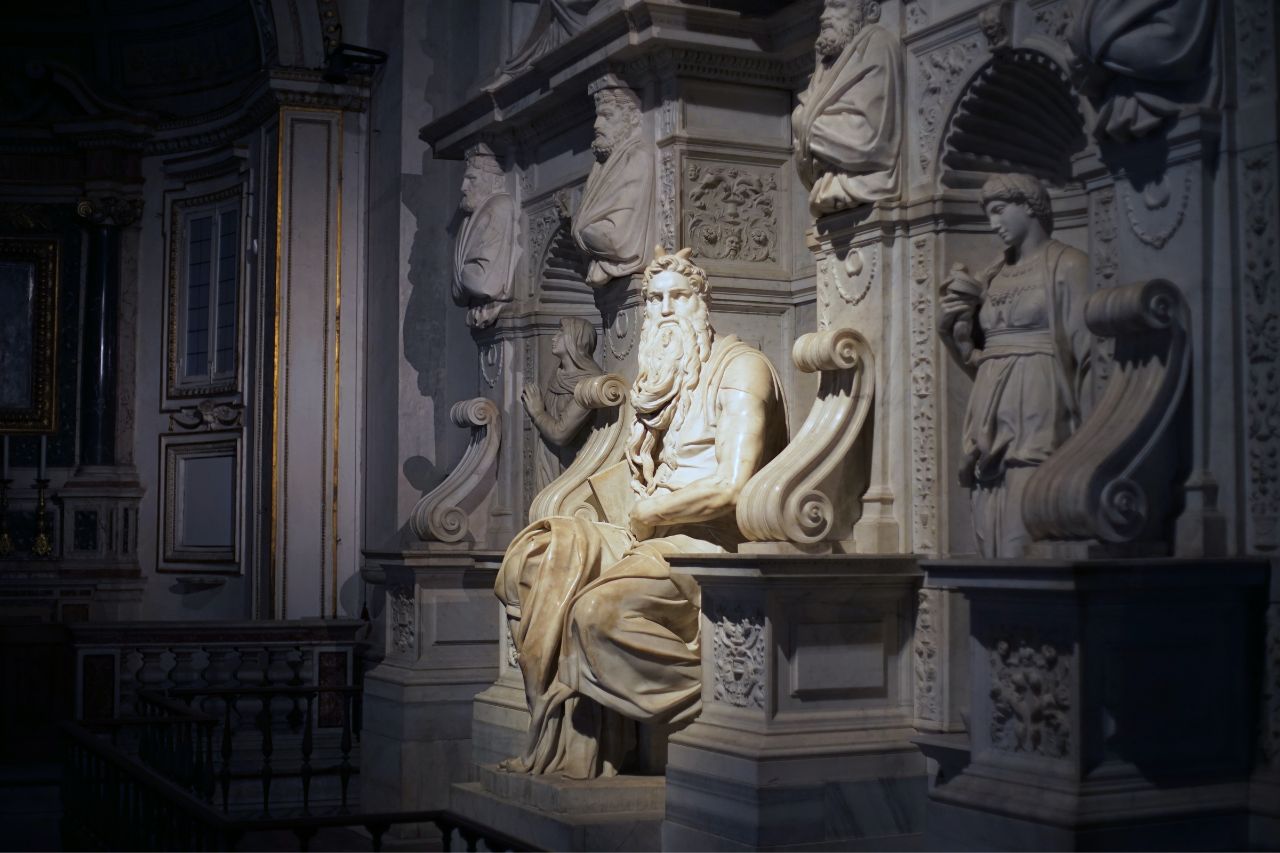
Artist: Michelangelo
Year: 1512-1515
Medium: Marble
Location: San Pietro in Vincoli
Moses by Michelangelo was commissioned by Pope Julius II in 1505. The popular statue depicts Moses with horns on his head, seated with one arm wrapping the tablet (10 commandments) and the other holding his flowing beard. Michelangelo brilliantly portrays Moses in deep thought as if contemplating to get up and react to something. Moses is a must-see for any art enthusiast interested in viewing statues in Rome.
7. Apollo and Daphne
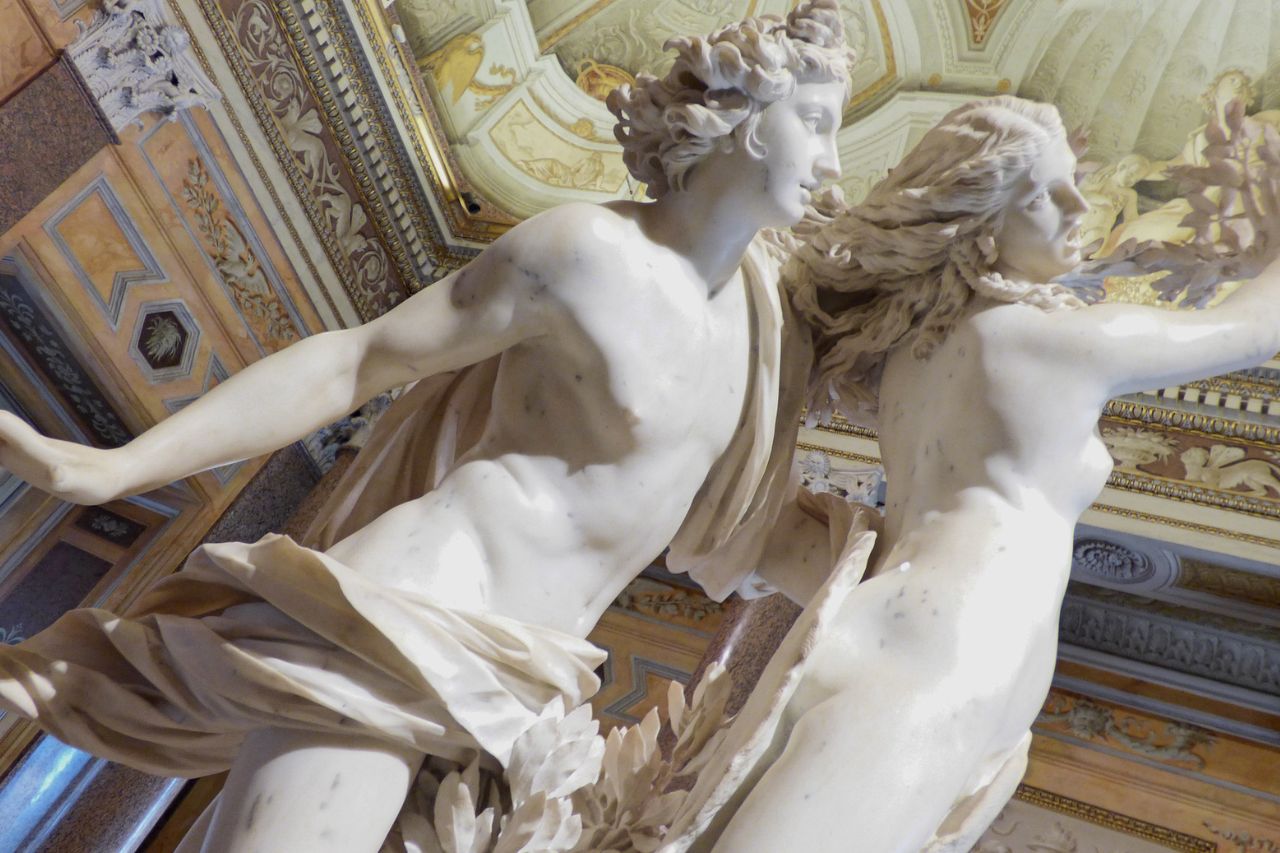
Artist: Gian Lorenzo Bernini
Year: 1622-1625
Medium: Marble
Location: Borghese Gallery and Museum
Apollo and Daphne is one of Bernini’s most popular works and is highly regarded by critics for its complex execution. It’s widely appreciated for its unique composition, which tends to change depending on a viewer’s angle. A quick glare at the statue isn’t enough to grasp its profound meaning, exactly why you should spare some time to get a different view of Bernini’s masterpiece whenever you’re in Rome.
8. The Fountain of the Four Rivers
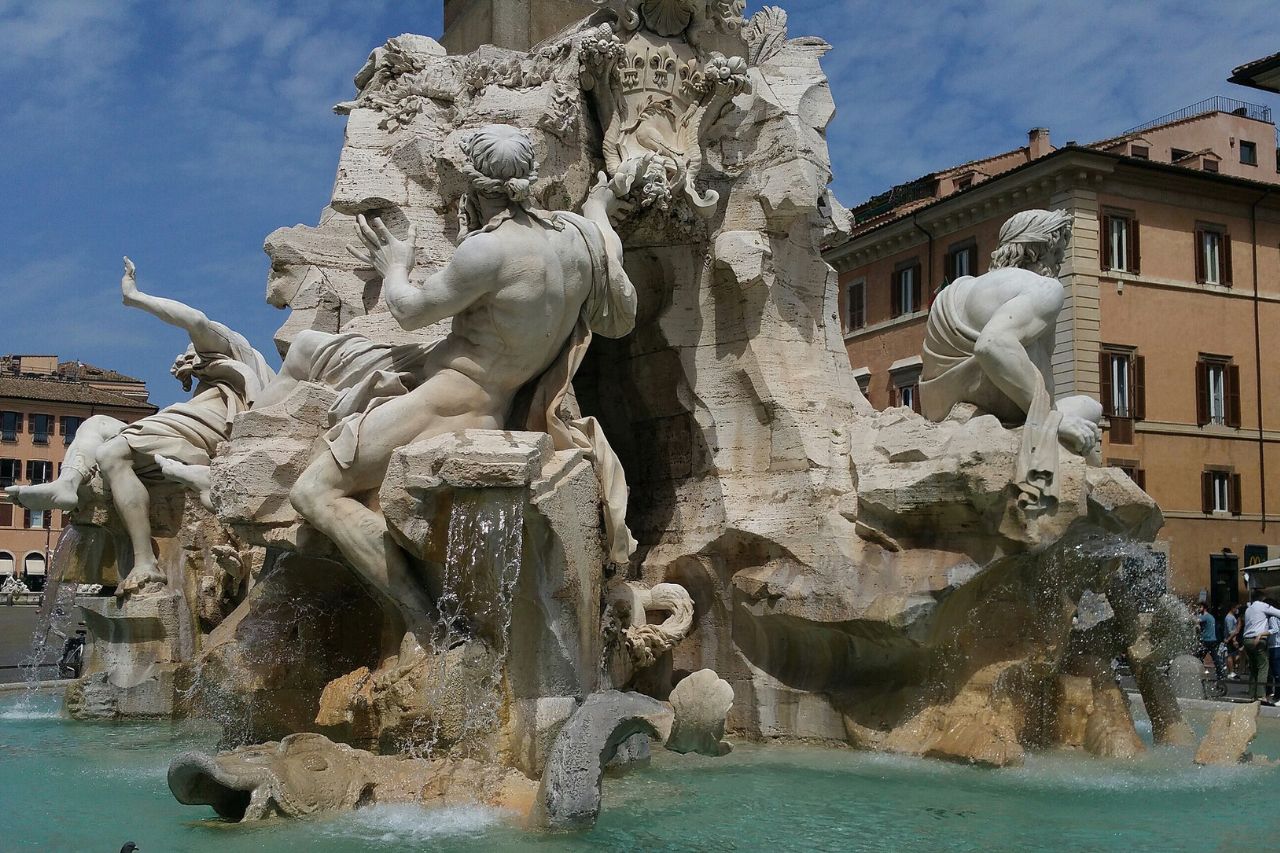
Artist: Gian Lorenzo Bernini
Year: 1651
Medium: Travertine
Location: Piazza Navona
The Fountain of the Four Rivers by Lorenzo Bernini stands out for its individualized and evocative characters. It features travertine rocks that support four river gods and is Bernini’s largest fountain creation and arguably the most popular fountain in Italy. The statue stands at 12.19 meters and is located at the Piazza Navona in Rome.
9. Augustus of Prima Porta
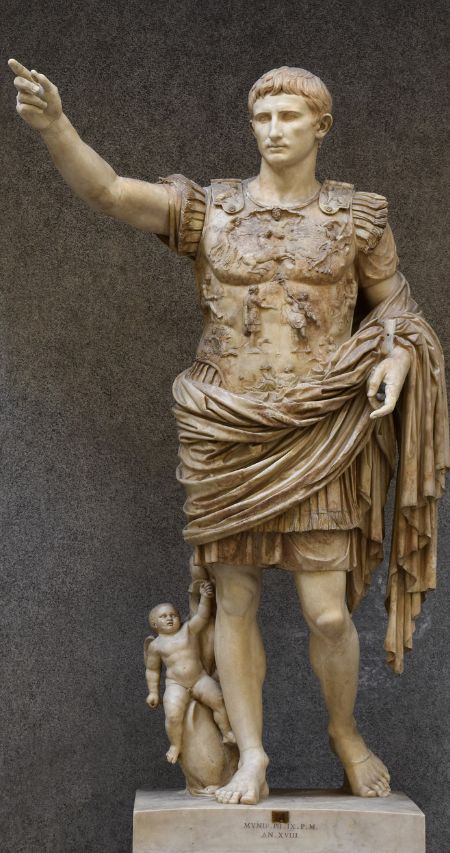

Artist: Unknown
Year: 1st century AD
Medium: White Marble
Location: Vatican Museums
Standing at 2.08 meters tall and weighing a massive 2,200 lb, the Augustus of Prima Porta is one of the most treasured ancient statues in Rome. It was discovered in 1863 and depicts a stern-looking emperor, Augustus, in military clothing, possibly addressing the troops. The statue has been subject to multiple interpretations but is widely believed to be inspired by the classical sculpture Doryphoros created by Polykleitos.
10. Capitoline Venus
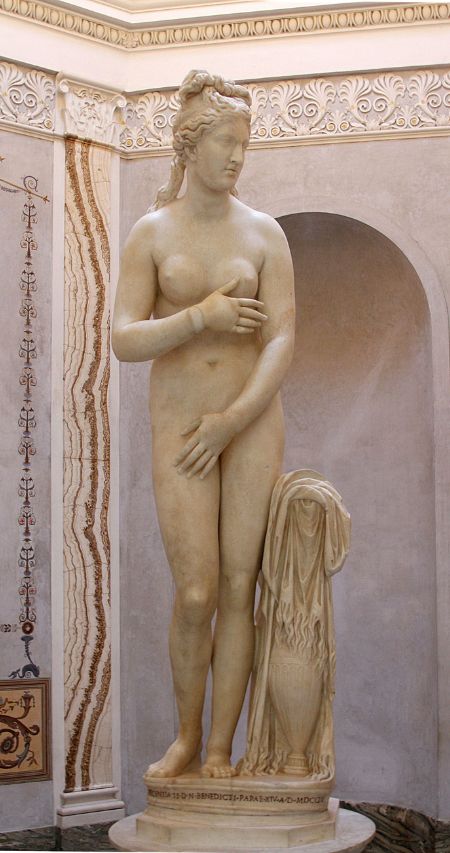
© José Luiz Bernardes Ribeiro
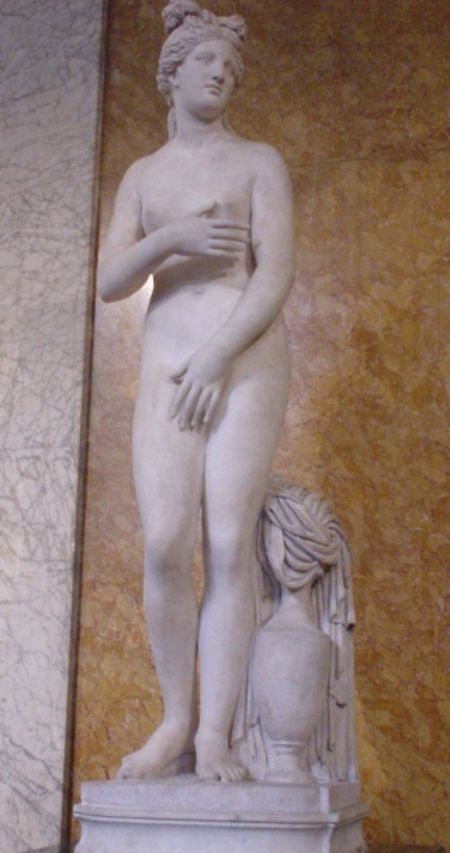
Artist: Unknown
Year: 4th Century BC
Medium: Marble
Location: Capitoline
The Capitoline Venus is an ancient marble statue that depicts Venus, the Roman goddess, in an alluring pose. Discovered in the 17th century, the popular statue was moved to the Capitoline Museum before being ceded to France in late 1797. It was later returned to its current home, the Capitoline Museums, in 1816, where its reputation continued to soar.
Read more: Statues in Italy – Don’t Miss These 15 Famous Must-Sees!
11. The Dying Gaul (Galata Morente)

Artist: Unknown
Year: 323-31 BC
Medium: Marble
Location: Capitoline Museums
The Dying Gaul is an ancient semi-recumbent statue housed in Rome’s Capitoline Museums. It depicts a heavily wounded Galatian with a visible sword puncture on his right chest. The statue is renowned for its realism, which evokes viewers’ emotions, making it a truly profound work of art. It’s been copied multiple times and is arguably one of the most popular statues in Rome
12. Aenea, Anchises, and Ascanius
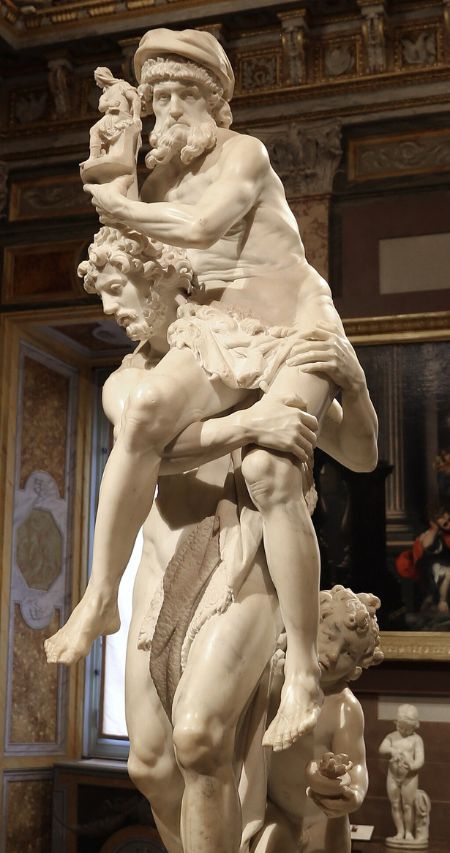
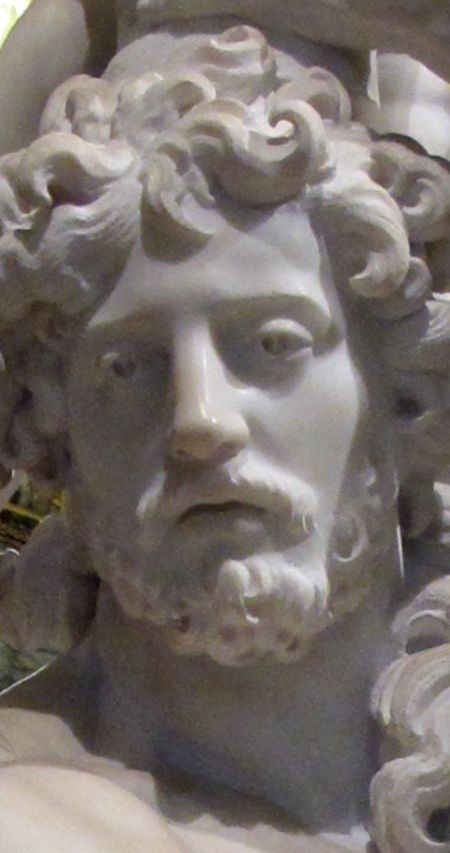
Artist: GianLorenzo Bernini
Year: 1618-1619
Medium: Marble
Location: Borghese Gallery
Aenea, Anchises, and Ascanius was commissioned by Cardinal Scipione Borghese in 1618 and was completed in 1619 by a then 20-year-old Bernini. It depicts three generations, Aenea, his father, and a young son. It is believed that Bernini’s father (a famous sculptor in his own right), assisted his son in completing the project. Several critics argue that it’s not Bernini’s best work, especially since the expressions aren’t prominent when viewed from different angles except from the frontal view.
13. The Ecstacy of St. Theresa
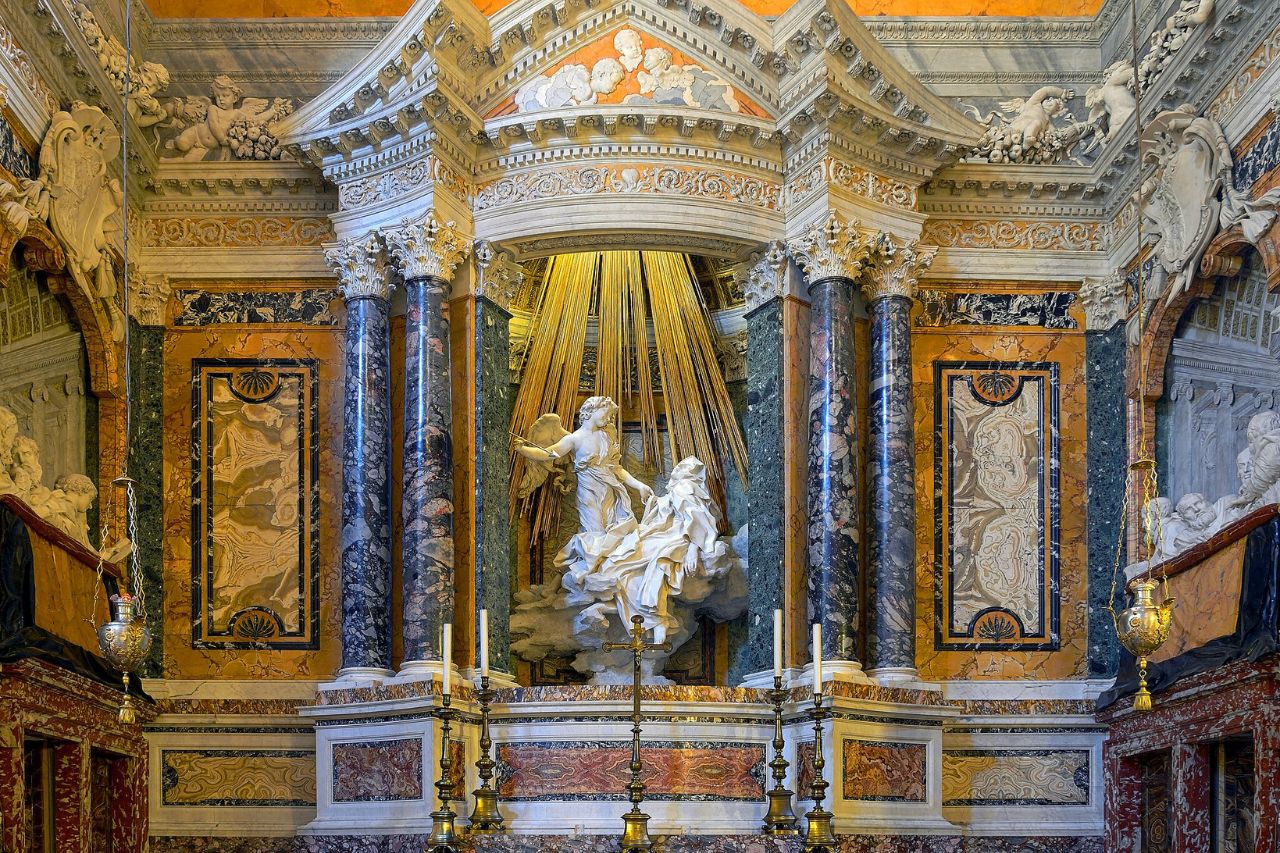
Artist: GianLorenzo Bernini
Year: 1647-1652
Medium: White marble
Location: Santa Maria della Vittoria
Also known as Saint Teresa in Ecstasy, the Ecstasy of Saint Teresa is a white marble sculptural group done by an artistically mature Bernini. It is a highly regarded piece that depicts a Spanish nun, Teresa of Avila, in ecstasy while a spear-holding angel stands above her. The emotions relayed in this group are a testament to Bernini’s brilliance and standing as the top artist of his generation.
Read more: Hidden Gems in Rome – 24 Less-Known Attractions Worth Seeing
14. Equestrian Statue of Marcus Aurelius
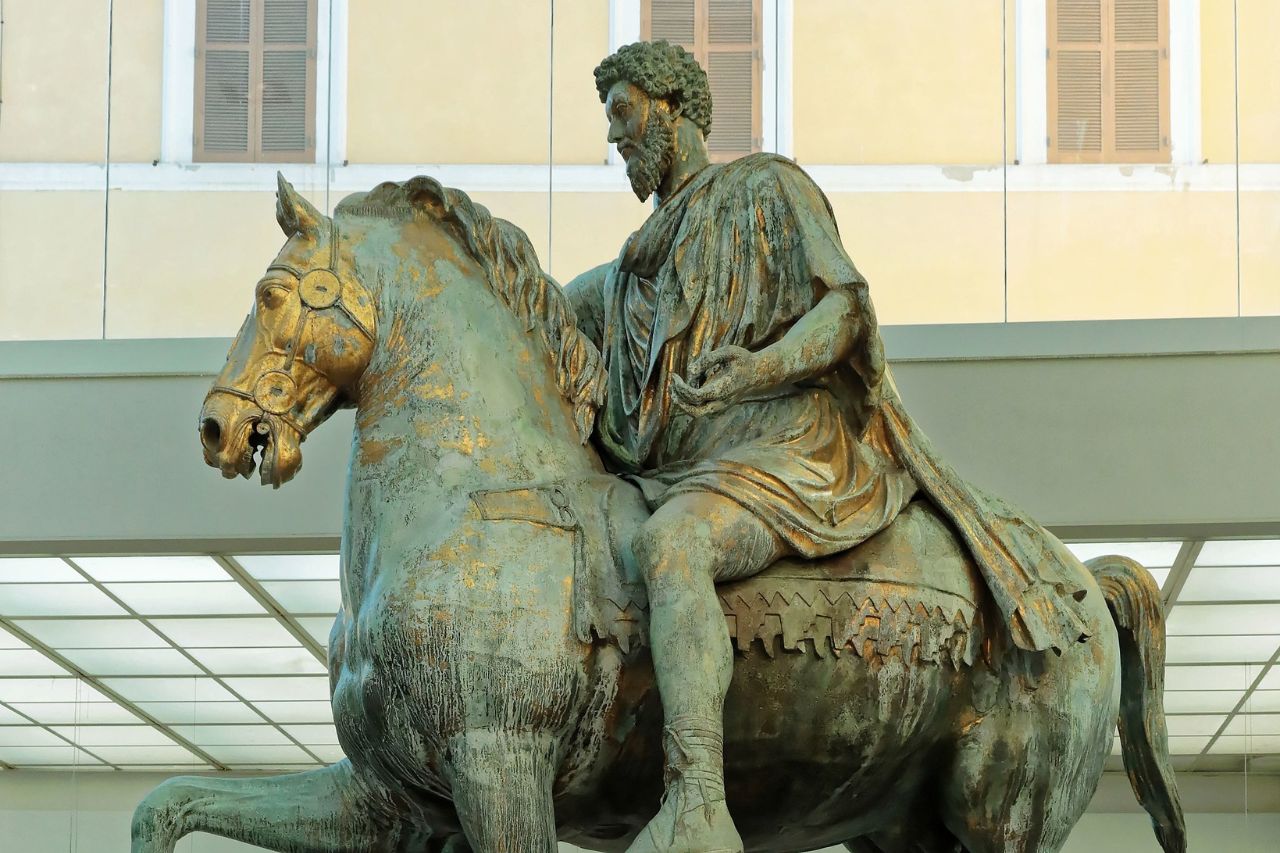
Artist: Unknown
Year: 175 AD
Medium: Bronze
Location: Capitoline Museums
Although the original location and artist behind the Equestrian Statue of Marcus Aurelius remain unknown, there’s no denying that the bronze sculpture is a pre-Christian masterpiece and one of the most sought-after statues in Rome. It depicts an emperor on a horse, extending his right hand as if addressing his troops. The lack of armor or weapons supports the argument that Aurelius was more of a peace-bringer than a military hero.
15. Statue of St.Peter
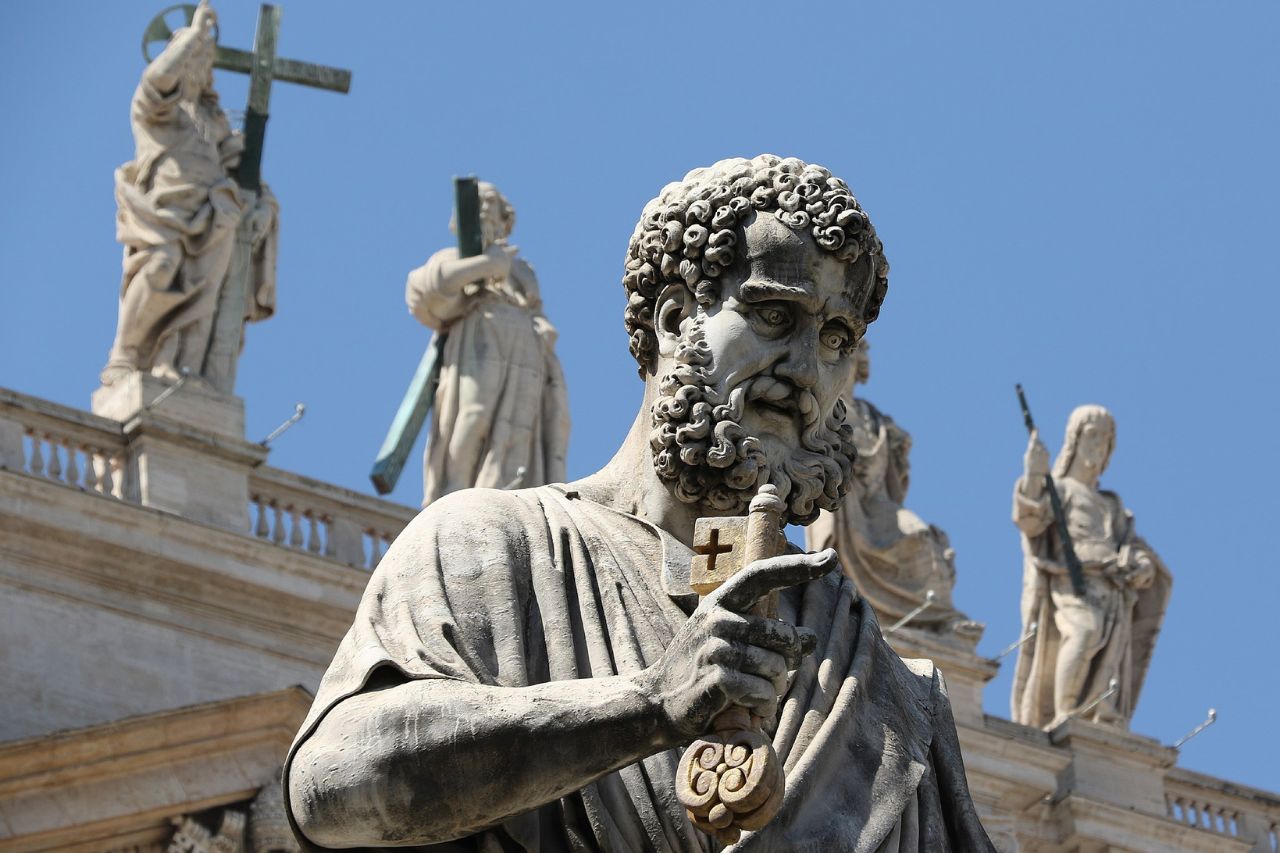
Artist: Arnolfo di Cambio
Year: c.1300
Medium: Bronze
Location: St.Peter’s Basilica
The Statue of St.Peter is a favorite for pilgrims who touch and kiss the foot as a plea to the saint to pray for them to enter heaven when their time comes. It portrays the saint preaching or giving a blessing while holding the keys to heaven. The statue comes to life on the feast of St. Peter where it’s clothed, decorated, and even ringed. It’s definitely a must-view sculpture when touring Rome.
Talking Statues of Rome
The talking statues of Rome provide an outlet for anonymous expression. Here are some of the most popular talking statues in the Eternal City.
16. II Babuino

II Babuino depicts a reclining Silenius who is half man and half goat. The wall behind the statue has been used by locals to make anonymous political and social comments. You can find the fountain at the front of the Canova Tadolini Museum.
17. Marforio
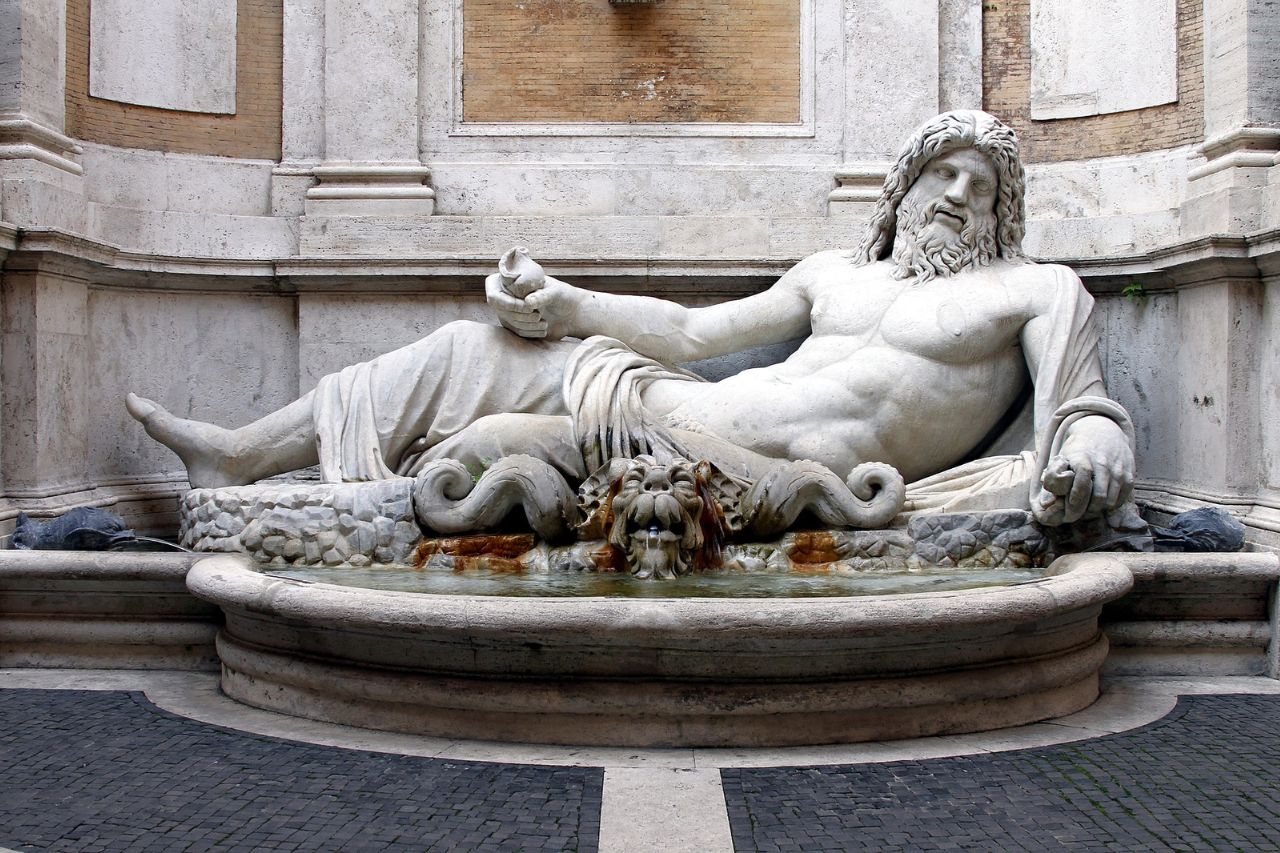
Marforio, also called Marphurius, is one of Rome’s talking statues. It’s a large 1st-century marble sculpture depicting Oceanus in a reclining position on a granite basin. The popular talking statue is housed in the Palazzo Nuovo’s courtyard.
18. II Facchino

Created in 1580 by Jacopo del Conte, the II Facchino depicts a man with a cap carrying a small barrel. Water sprouts from the barrel, creating an incongruent fountain. The II Facchino was moved to its current home, the Palazzo De Carolis Simonetti, in the 19th century.
19. Abate Luigi
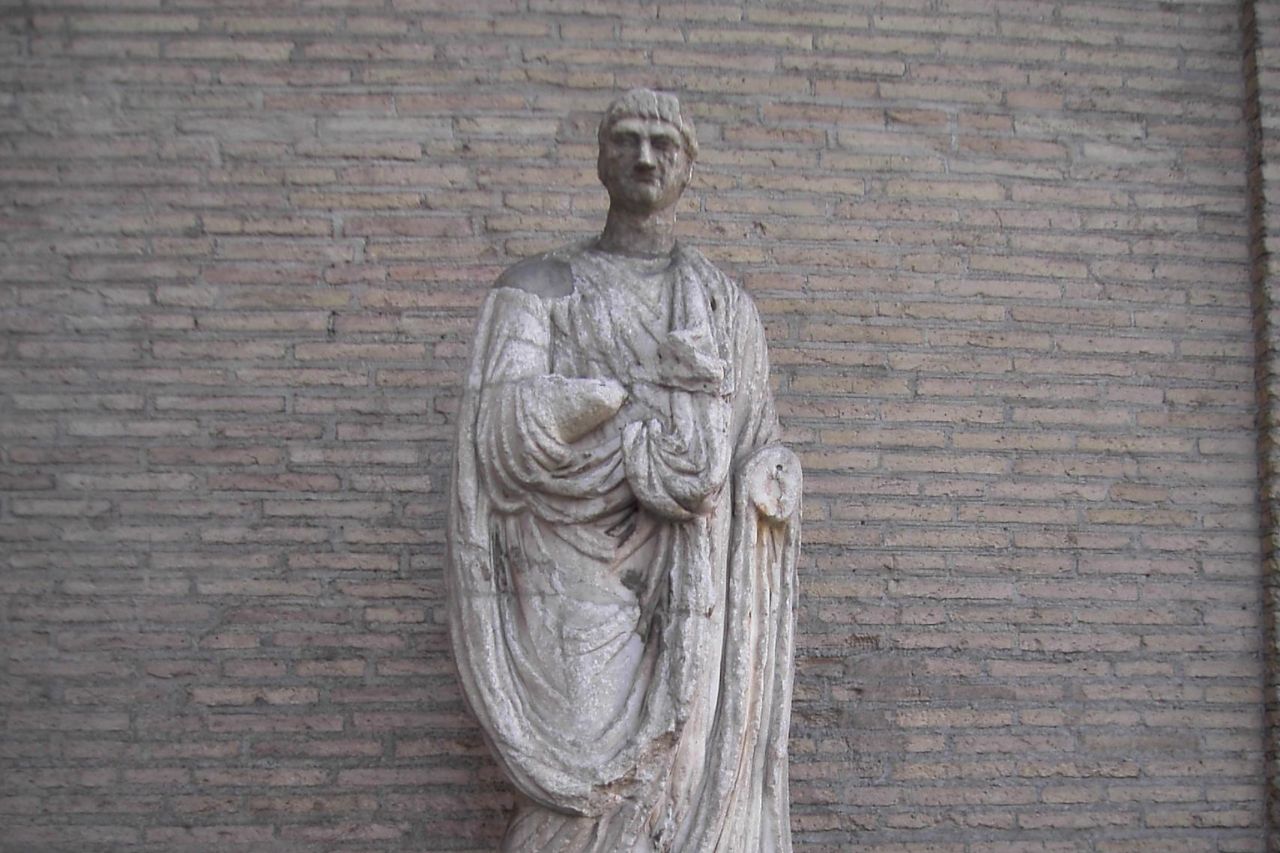
The Abate Luigi is a popular talking statue that depicts a man in a toga, widely thought to be a magistrate. The statue has been beheaded several times and transferred multiple times. You can find the Abate Luigi standing tall in the piazza Vidoni on a sidewall of the famous Basilica di Sant’Andrea della Valle.
20. Pasquino
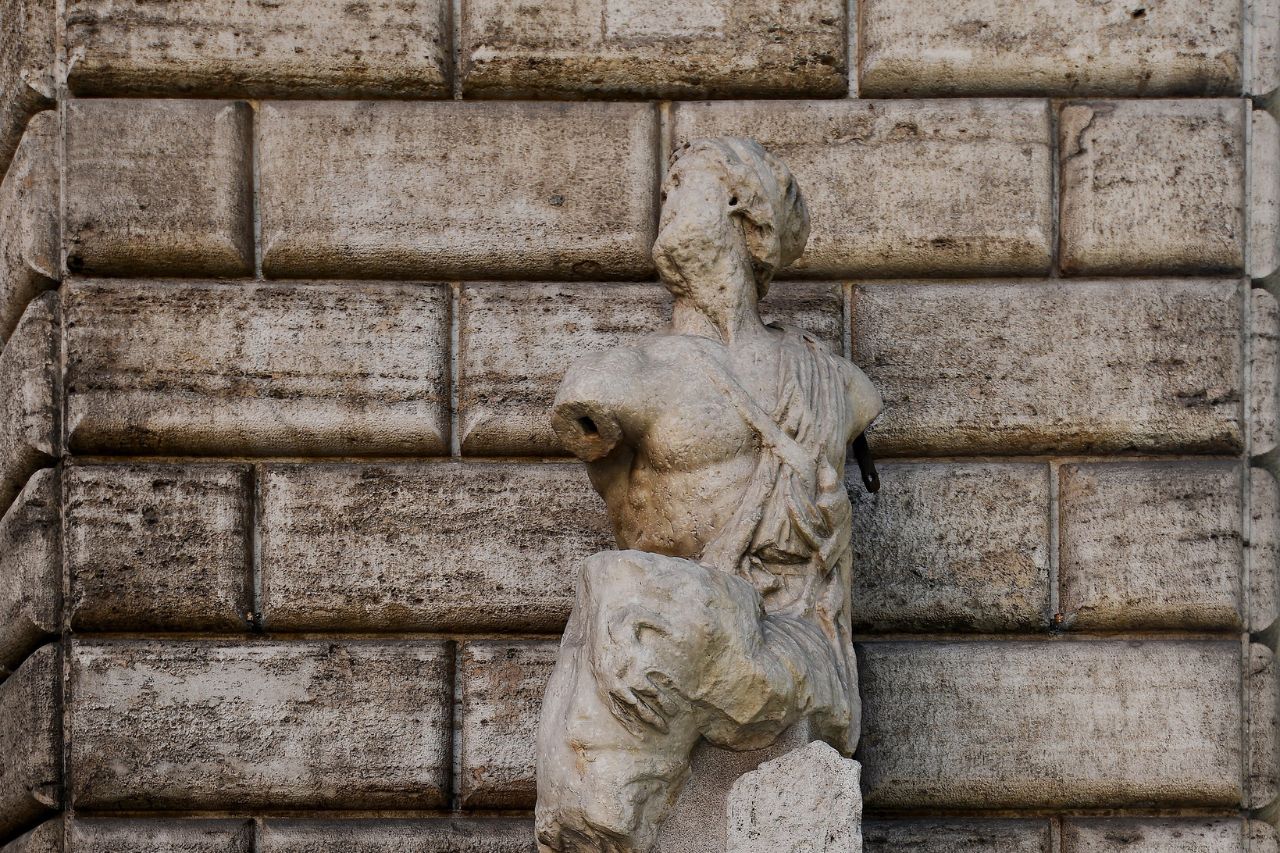
Pasquino is the most popular talking statue in Rome located at the corner of Palazzo Braschi. It’s from the Hellenistic period but was found in 1501 and remains a mysterious work with unknown origin. Although it’s illegal to place posters directly on the statue, there’s a sideboard where locals can place pasquinades.
Angel Statues in Rome: Guardians of the Eternal City
Rome is home to several angel statues, which you can find in public spaces and temples. Below are some of the top angel statues in Rome to view the guardians of the Eternal City.
21. Sant’Angelo Bridge
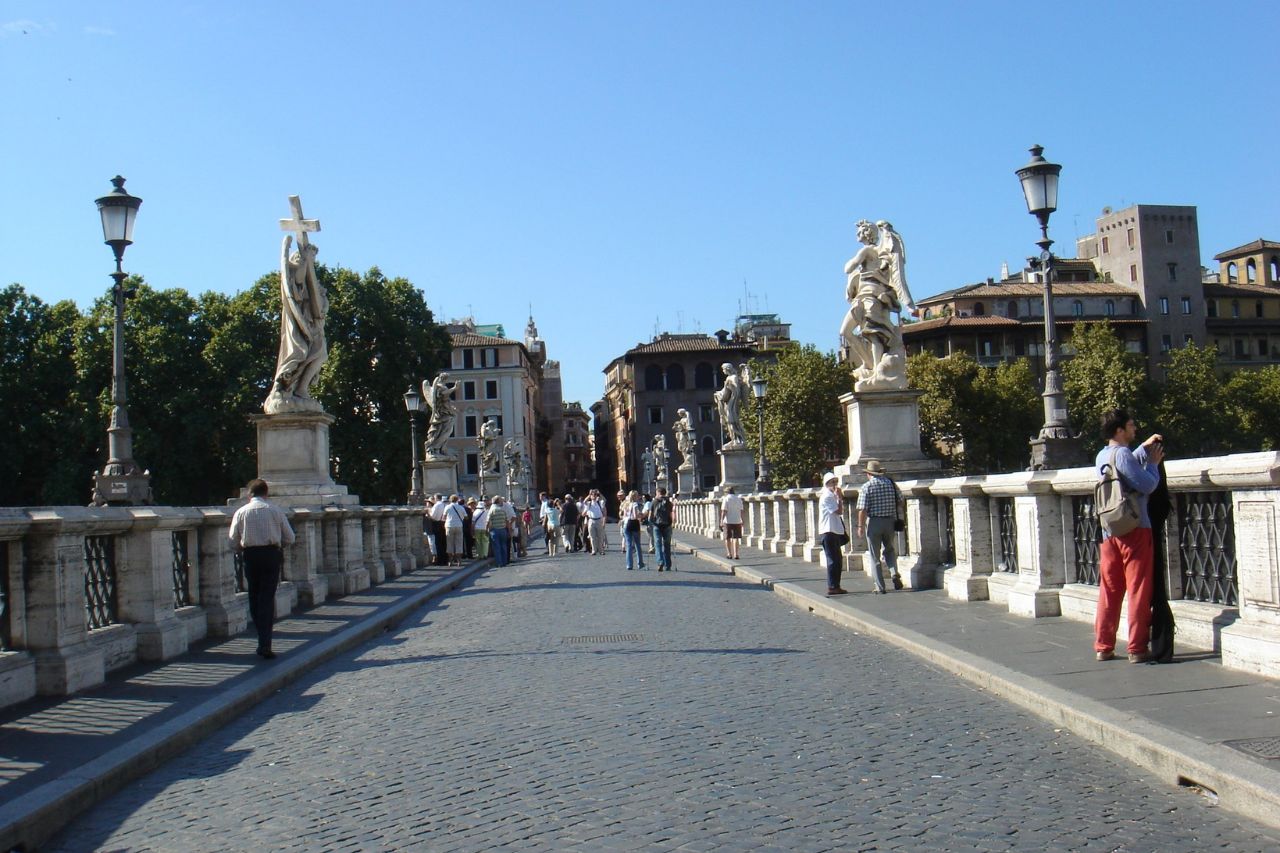
Dubbed an architectural masterpiece by critics across the globe, the Sant’Angelo connects the rest of Rome to Saint Peter’s Basilica. The statues of 10 angels adorn the bridge, with each holding an instrument of the Passion of Jesus.
22. Habakkuk and the Angel
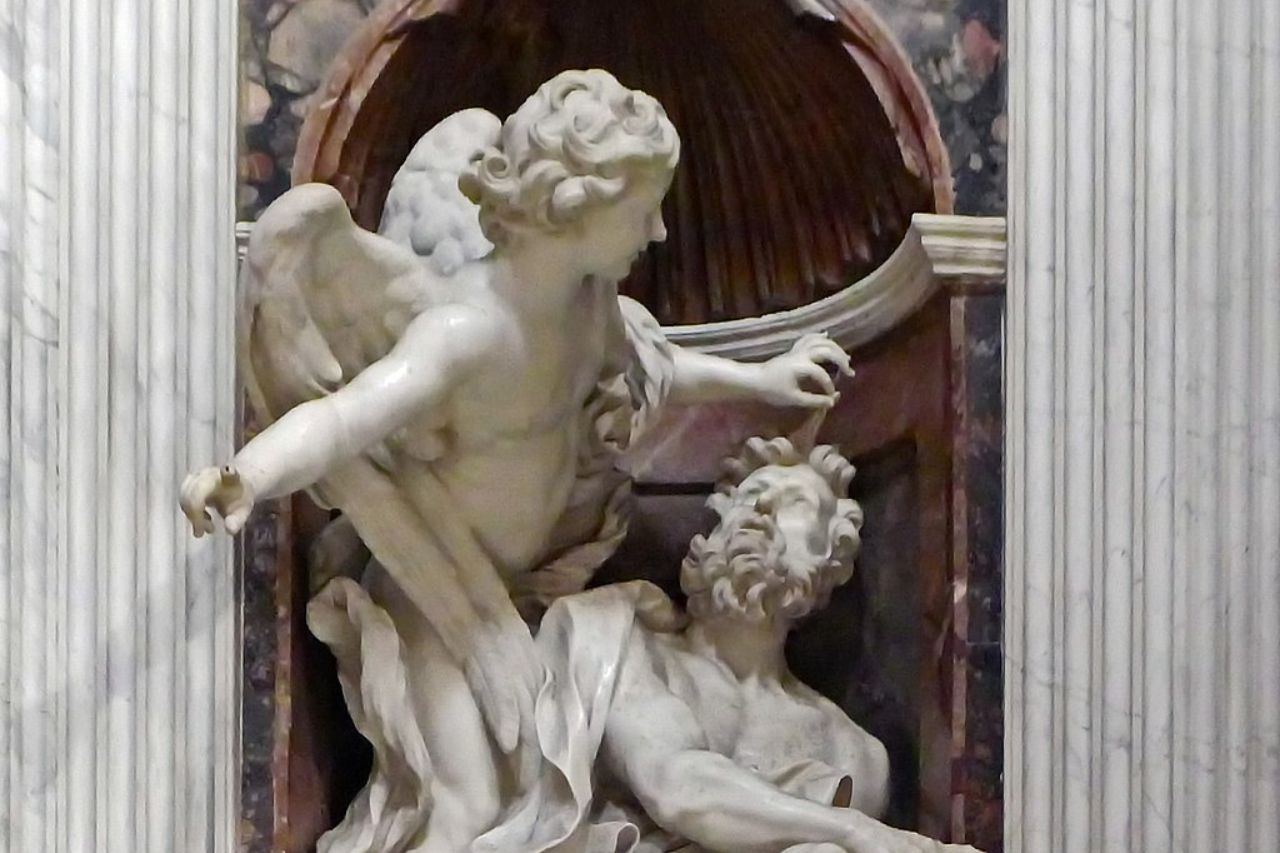
Created by GianLorenzo Bernini between 1656 to 1661, the sculpture depicts Habakkuk seated with an angel leaning above his head. It’s part of a larger composition of sculptures housed in the Basilica of Santa Maria del Popolo.
Read more: Piazza del Popolo – 15 Things to See and Do
23. Angel of Grief
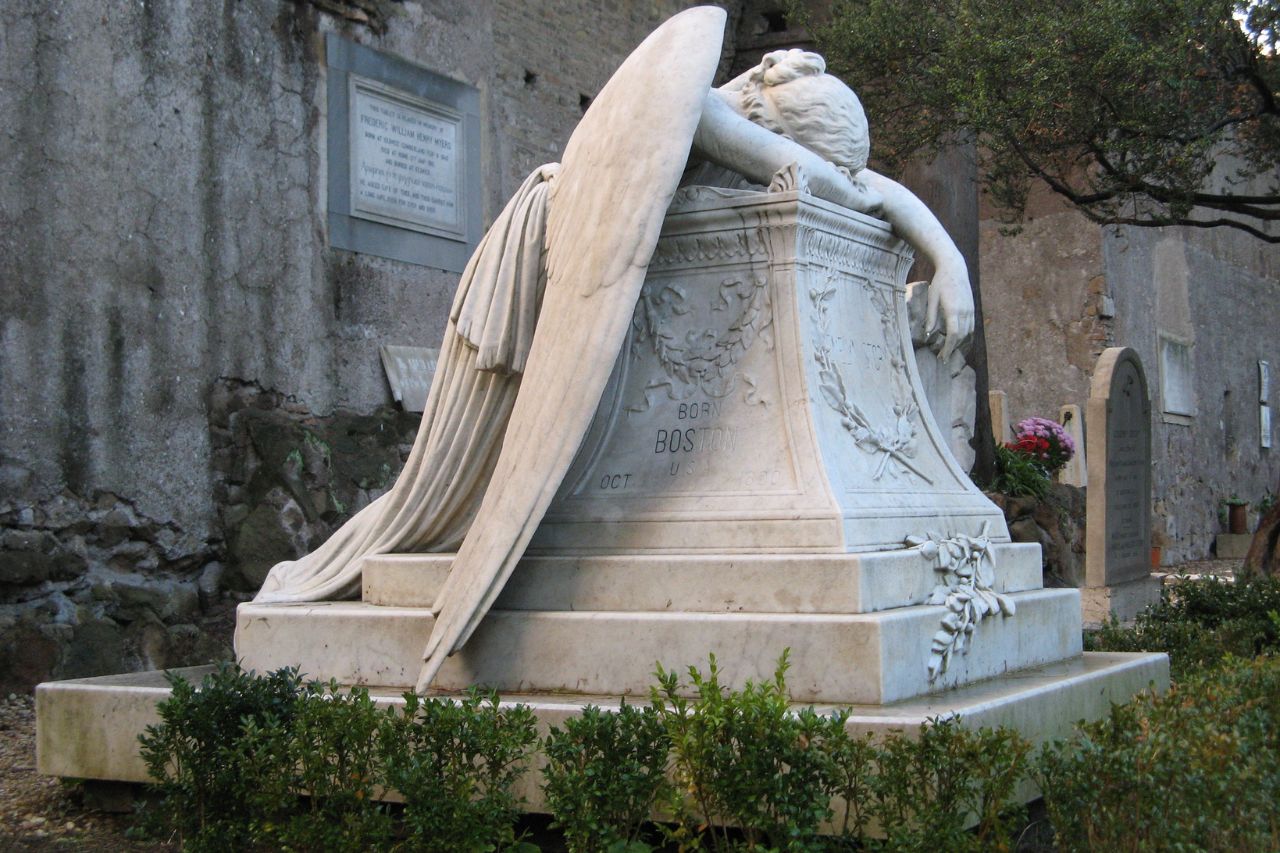
The Angel of Grief is a popular 1894 sculpture found in Rome’s Protestant Cemetery. It was created by William Wetmore in honor of his wife. The sculpture depicts a life-sized angel weeping, appearing distraught over the tomb. The Angel of Grief is among the most copied sculptures since the 19th century.
FAQs About the Statues in Rome
Below are answers to some of the most commonly asked questions about statues in Rome Italy.
Is there a statue of David in Rome?
There is a statue of David in Rome. However, it isn’t Michelangelo’s popular depiction of a nude David but Bernini’s portrayal of a clothed David. It was commissioned back in 1623 and took 8 months to complete.
Where is Moses Statue in Rome?
The Moses statue is located in the church of San Pietro in Vincoli. It was commissioned in 1505 and depicts Moses sitting down in deep thought with the Ten Commandments in his hands. The artwork is highly regarded due to Michelangelo ability to realistically portray Moses’ facial expressions.
Where is the Statue of David in Rome?
The statue of David in Rome is in the Galleria Borghese. It was sculpted by Gian Lorenzo Bernini and is widely confused with Michelangelo statue of David in Florence. Bernini’s sculpture depicts David in a flowing robe and is highly regarded for its style and execution.
Wrapping Up
There’s no denying that Rome has a rich history and boasts an unmatched artistic splendor. From Michalenagelo’s masterpieces to Bernini’s breathtaking sculptures and massive antique pieces, Rome is your go-to place when looking to experience art in its purest form.
When in Rome, it is highly advisable to spare some time to marvel at the timeless works of art displayed in Rome’s museums, churches, and top tourist destinations.
Featured image credits:
© José Luiz Bernardes Ribeiro


